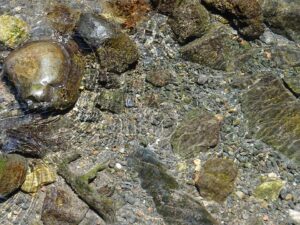
“`html
Introduction
Creating a suitable environment for your reptile is crucial for its health and well-being. One of the key components of a reptile’s habitat is a hide. A hide provides a safe space for reptiles to retreat, rest, and regulate their body temperature. Crafting a DIY reptile hide can be a rewarding experience, offering you the chance to customize the perfect sanctuary tailored to your pet’s specific needs. In this guide, we’ll explore the materials, tools, and creative ideas necessary to construct a unique and functional hide for your reptile.
Understanding the Importance of a Reptile Hide
Reptiles are ectothermic animals, meaning they rely on external sources to regulate their body temperature. A hide serves multiple purposes: it provides a cooler or warmer retreat within the enclosure, reduces stress by offering a sense of security, and mimics the natural environment, encouraging natural behaviors. Whether for a snake, lizard, or tortoise, a well-crafted hide is essential for their physical and mental health.
Choosing the Right Materials
The first step in crafting a DIY reptile hide is selecting the appropriate materials. Consider the following:
Natural Materials
– **Wood:** Choose untreated, safe woods like cork bark, grapevine, or driftwood. These options provide a natural look and feel, blending seamlessly into the habitat.
– **Stone:** Smooth river rocks or slate can create a sturdy and aesthetically pleasing hide.
– **Plants:** Incorporate live or artificial plants to enhance the realism of the hide.
Artificial Materials
– **PVC and Plastic:** Lightweight and easy to clean, these materials are ideal for creating custom shapes and tunnels.
– **Clay or Ceramics:** These materials can be molded into various shapes and provide a natural look once dried and painted.
– **Resin:** Durable and waterproof, resin is perfect for crafting intricate designs that mimic natural formations.
Essential Tools and Safety Considerations
Before beginning your DIY project, gather the necessary tools and adhere to safety guidelines:
Tools
– **Cutting Tools:** Utilize saws, knives, or rotary tools to shape materials accurately.
– **Adhesives:** Choose reptile-safe adhesives like silicone or non-toxic glue to secure pieces together.
– **Sandpaper:** Use to smooth rough edges and surfaces, ensuring a safe environment for your reptile.
Safety Considerations
– **Non-Toxic Materials:** Ensure all materials and adhesives are non-toxic and safe for reptiles.
– **Ventilation:** Work in a well-ventilated area, especially when using adhesives or paints.
– **Secure Edges:** Sand down sharp edges and corners to prevent injury to your pet.
Design Ideas and Inspirations
The design of your reptile hide can be as simple or elaborate as you wish. Here are some creative ideas to inspire your project:
Rustic Cave Hide
Create a natural cave using cork bark or driftwood, adding moss and lichen for a rustic feel. This type of hide is ideal for reptiles that enjoy burrowing or climbing.
Modern Minimalist Hide
Construct a sleek, geometrical hide using PVC or plastic, painted in neutral tones to complement a modern enclosure design.
Jungle Retreat
Incorporate live plants and vines into a ceramic or clay hide to mimic a lush jungle environment, perfect for arboreal reptiles.
Desert Oasis
Use smooth stones and sand-colored resin to build a hide that blends into a desert-themed habitat, complete with cactus replicas and sunning spots.
Step-by-Step Guide to Crafting a Simple DIY Reptile Hide
Follow these steps to create a basic yet functional reptile hide:
Step 1: Planning
– Determine the size and shape of the hide based on your reptile’s species and size. Ensure the hide is spacious enough for your pet to enter and turn around comfortably.
Step 2: Cutting and Shaping
– Use your cutting tools to shape the chosen materials into the desired form. For a cave-like hide, consider cutting an arch-shaped entrance into a piece of cork bark or wood.
Step 3: Assembling and Securing
– Assemble the pieces using reptile-safe adhesives. Ensure the structure is stable and secure, allowing no gaps or loose parts that could pose a risk to your pet.
Step 4: Finishing Touches
– Sand any rough edges, apply non-toxic paint or sealant if desired, and add decorative elements like moss or fake plants to enhance the design.
Step 5: Placement
– Position the hide within your reptile’s enclosure, ensuring it is easily accessible and strategically placed for temperature regulation. For example, place one side in a warm area and the other in a cooler spot to offer thermoregulation options.
Maintenance and Upkeep
Regular maintenance of the hide is vital to ensure your reptile’s health:
Cleaning
– Clean the hide regularly using a reptile-safe disinfectant. Remove waste and debris to prevent bacterial growth.
Inspection
– Routinely inspect the hide for wear and tear. Repair or replace any damaged parts to maintain a safe environment.
Conclusion
Crafting a DIY reptile hide offers an opportunity to personalize your pet’s habitat while providing essential benefits for their well-being. By selecting the right materials, adhering to safety guidelines, and tapping into your creativity, you can create a hide that not only meets the needs of your reptile but also enhances the aesthetic of their enclosure. With thoughtful design and regular maintenance, your DIY hide will become a cherished part of your reptile’s home, contributing to their happiness and health for years to come.
“`
#ChatGPT assisted in the creation of this article.








